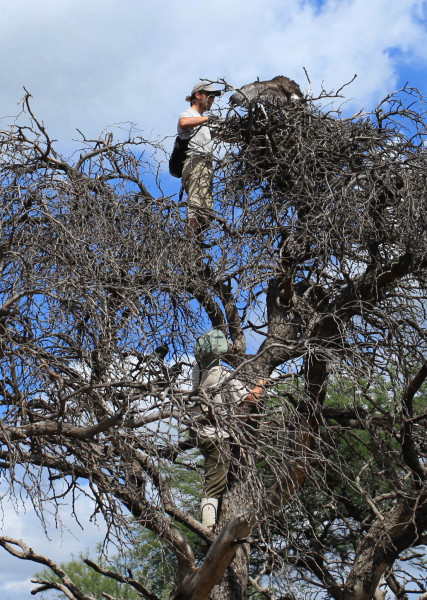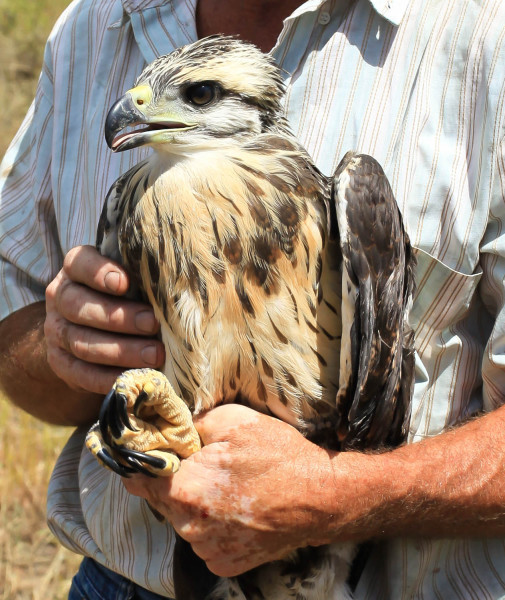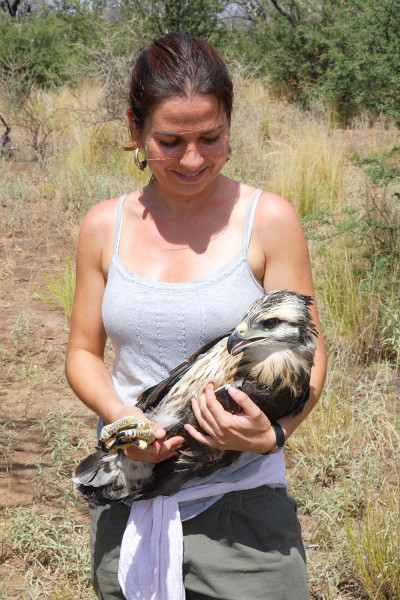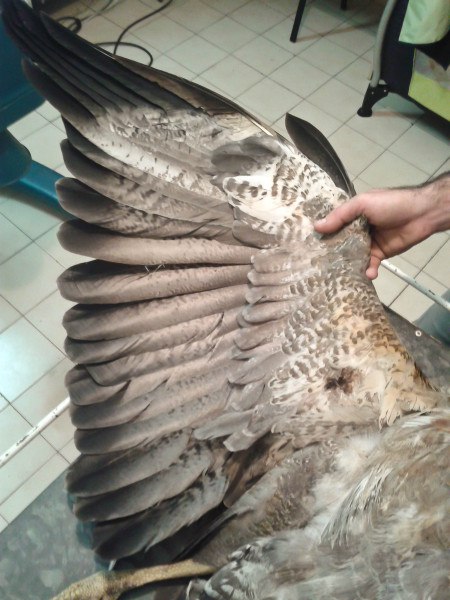Another crowned eagle shot
Osprey return to the Elizabeth
June 27, 2014
In June, The Center for Conservation Biology (CCB) received news from Argentina that another crowned solitary eagle had been shot.
This bird was one of 12 individuals being tracked with satellite transmitters as part of a collaborative study between the Center for the Study of Birds of Prey of Argentina (Centro para el Estudio y Conservación de las Aves Rapaces en Argentina), located within the Universidad de La Pampa, The Center for Conservation Biology, and The Peregrine Fund. The broad study was designed to investigate dispersal and movement patterns during the juvenile stage, a period during the life cycle of crowned eagles that biologists know nothing about.

Maxi Galmes ( top) and Manu Grande (below) from the raptor center climb a calden nest tree to retrieve the single young for banding. Photo by Bryan Watts.

Young eagle on banding day that was recently shot. Photo by Bryan Watts.

Isabel Luque Romero holds the young eagle on banding day. Photo by Bart Paxton.
The bird was initially marked in 2012 along with four other nestlings. Only a single bird of this initial cohort is still on the wing. Two of the birds have been shot and two have been electrocuted.
This remarkable eagle is critically endangered with a declining global population estimated to be well below 1,000 individuals. The species is classified as endangered on the IUCN Red List, is included on the threatened lists of both Brazil and Argentina and is presumed extirpated in Uruguay with no reported sightings since 1933. Extremely little is known about crowned eagle population biology and basic ecology.

Gunshot wound on wing of downed eagle. Photo by Maxi Galmes.
The shooting of these individuals is senseless. Crowned eagles feed almost exclusively on snakes and armadillos and pose no threat to any domestic animals. The crowned eagle has a very low reproductive rate, producing a maximum of only one young per year. This life history strategy is not sustainable without relatively high survival. In addition to habitat loss, juvenile and/or adult mortality from human sources may play an important role in the continuing decline. The ongoing tracking study is intended to quantify survival to breeding age. Four birds still remain from the 2013 cohort and two remain from the 2014 cohort.
Learn more about the crowned solitary eagle tracking project.
Written by Bryan Watts | bdwatt@wm.edu | (757) 221-2247
June 30, 2014



